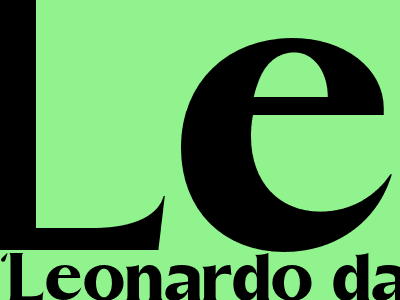
Leonardo da Vinci: A Humanizing Look into a Great Mind
Delving into the Life and Legacy of the Renaissance Master
Early Life and Florentine Beginnings
Leonardo da Vinci, born in 1452 in the Italian town of Vinci, was a child of illegitimate birth. Despit his uncertain origins, Leonardo's precocious talent and boundless curiosity were evident from a young age. At the age of 14, he became an apprentice to the renowned Florentine painter, Andrea del Verrocchio. Here, Leonardo honed his artistic skills, mastering the techniques of drawing, painting, and sculpture.
Anatomical Studies and Scientific Pursuits
Beyond his artistic endeavors, Leonardo was also driven by an insatiable thirst for knowledge, particularly in the fields of anatomy and science. He spent countless hours dissecting human cadavers, meticulously recording his observations in detailed sketches and notes. This profound understanding of human form would later inform his artistic masterpieces, imbuing them with an unprecedented realism. Leonardo's scientific pursuits extended beyond anatomy, encompassing diverse fields such as optics, engineering, and geology.
Artistic Innovations and Iconic Masterpieces
Leonardo's artistic genius manifested itself in a wide range of mediums, including painting, drawing, and sculpture. His most celebrated works, the "Mona Lisa" and "The Last Supper," exemplify his mastery of sfumato, a technique that creates a soft, hazy effect, lending his subjects an enigmatic and timeless quality. Leonardo's innovative approach to perspective and composition revolutionized Renaissance art, influencing generations of artists to come.
Legacy of Influence and Unending Fascination
Leonardo da Vinci's legacy extends far beyond the confines of his own time. His contributions to art, science, and engineering have had a profound impact on Western civilization. Leonardo's notebooks, filled with his sketches, inventions, and philosophical musings, offer a glimpse into the workings of one of history's most brilliant minds. His insatiable curiosity and relentless pursuit of knowledge continue to inspire and captivate people around the world.
Conclusion: Humanizing the Great Mind
Leonardo da Vinci, the quintessential Renaissance man, was a true visionary who transcended the boundaries of art and science. Through his masterful paintings, groundbreaking inventions, and profound insights, Leonardo humanized the pursuit of knowledge and creativity. His legacy serves as a reminder that even the greatest minds are shaped by their humanity. Leonardo da Vinci's unwavering dedication to understanding the world around him and leaving an enduring mark on it makes him an icon of human ingenuity and an eternal source of fascination.